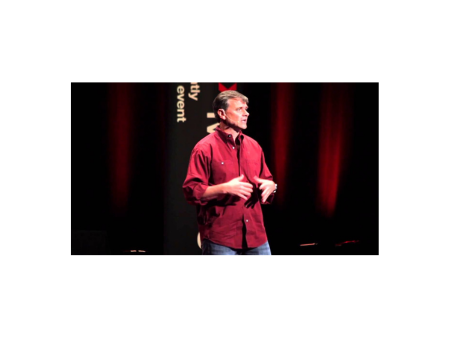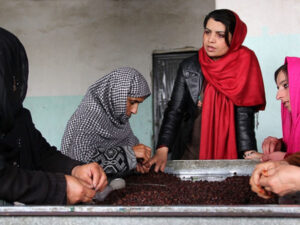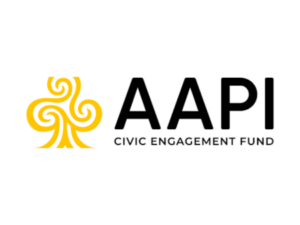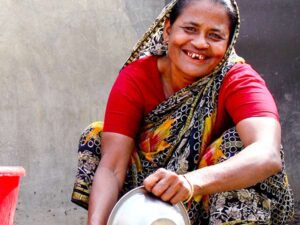The Invitation brings together and harnesses the power of trusted allies involved in the child welfare system. The organization empowers allies to pursue healthier, locally-inspired avenues that keep families together, reduce trauma and increase wellbeing in ways that the child welfare system cannot replicate.
Ned Breslin of The Invitation spoke with Jessica Kantor on January 29, 2024. Click here to read the full conversation with insights highlighted.
Jessica Kantor: Can you introduce yourself, the organization that you’re with, the problem that you’re addressing, and then how you’re addressing it?
Ned Breslin: My name is Ned Breslin. I have just started something called The Invitation, and it’s designed to work with community leaders and neighbors to redirect children and families away from child welfare and juvenile justice.
Child welfare and juvenile justice often overlap, and are systems full of far too many children and families who have no reason to be there.
We are talking about a $33 billion industry that has been designed to intervene in families’ lives if there is any sense of abuse or neglect in that home. $33 billion — not small.
But here is the thing – adults who have spent time in the child welfare system experience disproportionate amounts of homelessness, suicide attempts and substance abuse among other challenges. So, if you’re concerned about homelessness, incarceration, racial justice, low levels of education and low wages, or PTSD, you might also be interested in reimagining ways to support children and families to avoid child welfare and juvenile justice systems in ways that allow them to thrive. Because kids who go through child welfare do not — in far too many cases — emerge in ways that we would expect. Go speak to some unhoused people and be shaken by how many were in child welfare. Go to prisons and speak with incarcerated adults and be shocked at how many traveled in child welfare. Go speak with adults who have serious PTSD challenges and be wobbled by how many tell the tales of their journey through child welfare. And be shocked by the disproportionate number of children and families who are black, Native American and hispanic… it should alarm in so many ways.
$33 billion is not buying the results we should expect.
Jessica Kantor: When you say a $33 billion industry, what exactly does that mean?
Ned Breslin: The funding for child welfare and juvenile justice generally comes from the federal, state, county and city funding. Also included is philanthropic money, but not a lot as child welfare and juvenile justice are generally considered services that the US government has responsibility for.
So taxpayer money is used in a variety of forms — grants, Medicaid payments, reimbursements of a variety of kinds linked to public funding — that pay for services provided to care for children and families who have, for a variety of reasons, been flagged in some way for alleged neglect or abuse. Funds go for prevention work as well, but the hard truth is the number of children and families who enter child welfare every year has barely moved in decades. The percentage of funds to prevention is low as the system is flush with funding for services that are far down the road, when families are in the system whose outcomes are questionable.
More and more research is coming out that confirms that neglect is overwhelmingly a misread of a family’s challenges. Neglect is far too often being confused with poverty, and so many people enter child welfare because they are poor, not because they have neglected their children.
For example, there are moms who are holding together two or three jobs. They’re juggling this workload to care for their children. I have spoken to moms who speak of massive transport issues — their bus is late or their car breaks down, their shift ends a bit late because of some reason. They juggle so many things and at times still struggle to put food on the table or pay rent.
At times, their kids might get left alone for a little while, or they are late to collect them from school.
This can lead to accusations of neglect: “you left your child alone and that is unsafe” is the frame that is cast on this mom who is actually doing everything she can to help and care for her kids. This accusation activates investigations, and puts families on the defensive.
The Invitation tries to cut through all of this by finding creative ways to help this mom: help her succeed, support her efforts to reinforce networks around her who could help, help change the picture so that child welfare does not see a mom who is trying as a problem.
And let’s be clear, child welfare involvement is expensive. In Colorado for example, the average cost per child/family that becomes child welfare involved is in the area of $360,000 a year. We believe a fraction of that kind of funding could be used to help people like the mom whose story I told genetically above. A story that frankly is a common story.
That $33 billion typically finances a “toolbox” of interventions and therapies to address what systems actors deem wrong with the family – and that language of “deem wrong” is not far off.
The toolbox of interventions, resources and services is tied to payments which are applied to families who have been judged to be in need of support because of concerns around abuse and neglect.
If things are determined to be really bad at a home, then a child or children can be removed from that home. Foster care, group homes, and residential care are options on the table for a removed child. And any honest discussion of this hard decision would recognize that some children need to be removed from homes. If a parent is sexually abusing their child (for example) I do not think many would argue that the victim needs to be removed and protected.
But we also know that many children are removed for reasons that are questionable, or they are removed far too soon, or are removed for reasons that ultimately circle back to poverty.
And all of this — removals as well as situations where children and families stay together in the child welfare system — lead to results (regardless of effort or intent) that baffle. As I said, go speak with unhoused adults, with incarcerated adults and listen – listen to their stories. You will not be able to look away in my experience.
The Invitation hopes to show, in practice, that locally-designed, non child welfare pathways out of systems involvement are affordable, have greater impact and ultimately keep families together for the good of all at a fraction of the cost we now spend, and with better lasting results for children and families.
I must say that there are really good people in the child welfare sector — I do not know one person who is in child welfare who does not care about families and their wellbeing. But the tools at their disposal are limited, the system incentives are all wrong and the impact of the sector on families cannot really be justified.
The Invitation simply tries to model how money could be used differently to get better results.
Jessica Kantor: Can you share a little bit more about how you’re directly engaging with the community? Or how you’re engaging with the organizations and/or institutions that are in place?
Ned Breslin: I need to make it really clear that The Invitation is still new. I’m still building it and working to make it more concrete. One of the places I’m seriously considering is a county in Alabama where I have some connection to through my father, who grew up there. For a family that’s been visited by Child Protective Services (CPS) in this and many counties, it can be a scary thing. If you talk to people who have been investigated, they feel quite interrogated.
Someone comes from a government department or funded agency — a well-intentioned, really good person, well-trained, people who care — and they investigate a family because someone said, “Hey, I’m worried about that kid. They came to school in ratty clothes or seemed quite hungry, or I think the kid’s being left alone for a long time.” Whatever sparked that investigation.
So in broad strokes, a case worker comes by to ask you a thousand questions and evaluates your living situation — and judges whether abuse or neglect is occurring. The caseworker is well-intentioned and just wants to investigate a concern, but it can still feel like an interrogation to the family, and the lens the caseworker is looking through is limited to be kind.
And there is a real misaligned power dynamic at play here. The family that is being visited don’t understand what’s happening — why are they being investigated, being interrogated — and they certainly don’t know the rules by which they are being evaluated.
And they are scared.
What I have found is that, in this confusion and uncertainty, the family being investigated reaches out to trusted members of their communities — church leaders, next door neighbor, best friend — to seek advice and help. And I’ve found that those people – the people who the families visited by CPS reach out to for support – offer wise counsel and have ideas on how to help.
But — and here is the “but” — they often cannot activate their ideas of support to families.
Not because they do not want to but because resources and networks of support beyond communities are limited. That is where we believe The Invitation can help.
The Invitation is built around the principle that those closest to the families who are being investigated by CPS, those allies who families reach out to for support and who they trust, can offer real pathways away from child welfare if they can resource their ideas.
Local allies, neighbors in the broad sense of the word, are an untapped part of the solution who, if empowered with real resources – finance and networks of support beyond what child welfare offers and what may be available locally – then we could see families do better by not becoming child welfare involved.
At a fraction of the cost to families and taxpayers.
Our model wonders what the world could look like if local allies to these families had the financial means to activate their ideas to help families avoid child welfare when a family at risk of child welfare involvement goes to someone they trust in their community.
The basic idea of The Invitation is investing money into the hands of trusted community leaders with the expressed intent of driving down the numbers of children and families from their communities who become child welfare involved.
It’s a model based on trust. It’s part of a growing move in philanthropy to localize funding, investing closer to the point of impact and allowing existing community networks to thrive in ways that external agencies simply cannot.
I believe the results of this work would shock people and the system. I have been blessed to witness what happens when communities are trusted with actual finance, where their ideas and their care and kindness can be amplified with funding. The results are startling, they always are startling in my experience, and I look forward to building The Invitation with communities in ways that model alternatives to the current state of affairs which, again, are hard to justify any longer.
Jessica Kantor: Imagine if you just took that money and applied it directly to the community that is in need.
Ned Breslin: 100%.
I like buying outcomes by moving money in a different way. Every time it’s happened, every time I have worked in agencies that have been able to invest locally and let communities decide how that money would be spent for the desired outcome, we have been wowed. Every time we have gotten money closer to the problem and in the hands of people who, if we are being honest, we don’t trust, these drivers of change have not only exceeded expectations but also outperformed agencies of well meaning people who cannot match local knowledge, dreams or — dare we say — capacity.
Many counties that we are considering are deficit-framed. The residents of these counties are labeled with all the baggage commonly applied to deficit-framed communities: poor, undereducated, lacking skills, blah blah blah. And it’s just not true. It’s the wrong way to frame a community of people who are hardly that. The people who are mislabeled for a whole host of reasons to justify interventions from outside are gifts. They are good neighbors, they have great ideas infused with local knowledge and wisdom, and they are trusted.
We wonder what the world would look like if they could infuse resources into trusted local hands, and actually chart different paths than the paths being thrust upon them by outsiders who do not know the families as neighbors and allies do? What would the world look like if residents of these communities – these so-called poor, undereducated, underskilled people – actually helped families at risk of child welfare involvement and outperformed the professionals who intervene in families lives because their poverty is masked as neglect?
When you talk to communities, to families at risk of child welfare involvement, to families in the system they actually tell you over and over that they want the child welfare system out of their lives; it’s too much. Public and private funding is actually increasing involvement in family’s lives – and families are saying “please stop”. So what would it look like if a county had a hundred cases a year (for instance), and the work we are speaking about reduced that number to say 10 cases a year for a fraction of the cost?
That would be a different world.
Jessica Kantor: Since you are still building right now, what are some of the challenges that you’re currently facing that you’re working to overcome?
Ned Breslin: I have been a really successful fundraiser in my career, but never for a start-up so that has been challenging and a good experience frankly. Humbling. The ideas I try to implement are based on a trust-based hyper-local investment model that some philanthropists do not fund for many reasons I understand, and so it takes a while to build momentum and support.
Second, I think we must be very careful in work of this nature. I’m being extremely cautious because deficit-framed communities around the USA have been promised a lot and have been given very little. Promises have not been kept. So I’m being very cautious about creating alliances and building networks and offering promises that can’t be kept or delivered.
I am bored and exhausted with organizational hierarchies and titles, so I’m trying to create a truly flat organization that is title-less; that is relentlessly focused on an outcome; that believes in people and communities that most people don’t believe in. Building that and finding the right investors is going to take some time; and I want to get this as right as I can.
The last thing I’m trying to create is a new table: where power and decision-making comes from the deficit-framed communities we see outperforming sector norms. What would the world look like if we invested in communities with high child welfare rates and drove them down because of the great work of those individual communities AND these communities, in concert, were actually the table? Not at the table but THE table? Leaders from 6-10 communities across the US who are the organization – the flat organization I speak of above. These are the wise witnesses and guides who we should be listening to for programmatic and financial guidance. Communities committed to the same outcome — protecting their families, strengthening their communities, and showing the world that the deficit-framed ideology is not only inaccurate but profoundly wrong – leading the charge as the table.
Jessica Kantor: Do you have any examples of organizations that have created a flat, everybody has buy-in power, structures?
Ned Breslin: No. I’m sure they’re out there. I just haven’t found them yet. That said, I have been doing a version of this my whole career in a weird way. It actually comes from my work in South Africa. I was doing water and sanitation work with an organization called the Mvula Trust. Water was a real issue that the ANC government took very seriously. They were really dedicated to solving the rural water and sanitation challenges in South Africa.
We would go into these communities with water engineers to put in water systems, but the water engineers who did the implementation were only talking to us — staff at Mvula. So, we wondered what would happen if we gave the communities the money and the water engineers would actually have to work with local leaders as opposed to channeling all their concerns and ideas through us.
We believed the most knowledgeable people were the people on the locally-elected water committees. Not us, who lived in Johannesburg for example. No, the wisest ones were those who lived where the water project was being implemented.
In the beginning, people didn’t believe it could work. They thought rural South Africans were illiterate and incompetent, that they didn’t know anything about engineering and could not be trusted with large sums of money.
But we did it anyway.
We did hundreds, maybe thousands, of projects where we literally gave the local water committee the money for their water project. The communities added their own money which was beautiful and activated a real sense of local ownership. It was their money, their project, and our money and any support they needed was in honor of their leadership and their capital.
We invested tens of thousands of dollars in every project. Not small amounts, but invested to support local drive for change – real money invested in real communities who invested in themselves in ways many thought – through a deficit-framed lens – was not possible..
And we learned some simple truths.
First, water projects where the finance was managed locally outperformed similar projects in other parts of the country where the water committees were not trusted with finances.
Second, we found that communities entrusted with the finance made decisions that ensured all families would get access to water, not just those closest to the water point itself. This sounds obvious but you would be surprised how profound this impact was – they forced designs that were more expansive, more thoughtful and more considerate of all than was done when designs were done absent of this involvement. And the finance was key because communities had real power in decision-making when they wrote the checks.
Third, communities who managed the finance always managed more tightly even when designs were pushed to accommodate all, managed, more sharply. As such, we often found that communities would come in with better designed more thoughtful projects and be under-budget. The empowered water committees who had the money would negotiate and argue with the water engineers about where they wanted the water and how they wanted it distributed, and at what cost and quality.
It changed the dynamic between the engineers and communities, and it positively changed engineer perception of the communities that they now really served. These were not “Mvula Trust projects” any longer.
Every so often, I’d get a phone call from an engineering firm telling me that a community fired them. They wanted us to intervene, but we didn’t. We told them they needed to go back and fix it themselves; they were being fired because communities weren’t satisfied with their work.
And word traveled. Neighboring villages who were in line for water projects under this model knew if an engineering firm got fired and would not hire them. Good engineering firms – ones that listened to communities, met their needs and worked with them with respect were also talked about across communities. Responsive engineering firms got hired again and again, so ones that did not work out would either change or would no longer be hired. This simple change – giving communities the money and the power changed the dynamics of service in really powerful ways.
We saw engineering firms and others speak of these communities in new ways – no longer deficit-framed but eyes opened to the capacity and skill and compassion that is evident if you have eyes to see.
Last thing I want to tell you is my favorite part of the story. Every time a community came in under budget, since it would be bureaucratically complicated to take the money back, we would ask them what they would do with the extra money if we decided not to have them return it to us.
Every single time, I kid you not, they said they would invest it in their school: roofs, chalkboards, desks, pens and papers. It was beautiful. Of course we let them keep their money! Because it was theirs!
Throughout my career, I’ve been doing this in different ways; trying to get money as close to the point of impact as possible, trusting that the people closest to the point of impact who I believe know what to do when empowered with finance. They might need some guidance at times but that would be on their terms, at their request and that guidance is less than some may think.
And results dazzle in my experience. This approach of radically decentralized finance and decision-making just feeds the idea I and others have of a better world where the people that we discard, that we judge, that we stereotype, show us that those impressions are a lie. That’s what we at The Invitation are trying to do in child welfare – show that communities can outperform external agencies in ways that are good for us all..
Jessica Kantor: It’s really refreshing to hear that people are finding success when they directly consult and work with the community that they’re addressing problems in.
Ned Breslin: Communities are messy, let’s be honest, but that’s part of the beauty of it: communities are rich and dynamic places that struggle and thrive and celebrate and mourn and fight and reconcile… If you really believe that the solutions are based in the community, then acknowledge the beauty of the situation and give them the money. That’s the hook for my career that I’m most proud of; this idea that we’re not just going to say we believe or empower communities, but that we actually do that and move money differently, in their hands and control, to get a better result.
To go back to the South African example, it changes dramatically when you make the communities the holders of the money and tell the water engineers to negotiate with them on their terms because they understand the pathways better than we do. Relating that to child welfare and juvenile justice where families and trusted neighbors had a plan and when we invested in those ideas — gave money to unlikely local allies — we saw that people got diverted away from child welfare.
Jessica Kantor: From your career, are there any other challenges that you want to talk about or are there any specific insights that you think are important to share with anybody who’s trying to do similar work?
Ned Breslin: There’s a couple of lessons. People understand that systems are not achieving the results we would want, let’s just put it that way.
In my experience, to truly challenge a system that does not achieve the results we expect you have to move money differently, and trust different people to get different results.
And that has been the cornerstone of my career.
Understanding how money moves and the incentives that keep money moving in that direction despite poor results is central to this way of working. Understanding that and pivoting against it.
I have been blessed to work for organizations that wonder what would happen if money moved differently, went through different hands, went into the hands of people we marginalize consciously or unconsciously. These organizations wonder and then actually execute against those questions – and get money into the hands of those closest to impact.
And overall the results speak for themselves – moving money differently can get different and better results, if we have the trust to truly let go of control and watch as communities activate the ideas that they have, from the lived experience and wisdom that they have in abundance, should we look with new eyes.
And lastly, I would just say that much of the discussion of systems change and failure sort of dodges the violence that can be unleashed by those systems when threatened. Systems that live in the idea of doing good do not go quietly in the night, and systems whose impact stinks and become threatened by alternative approaches that move money differently do not play nicely when threatened in my experience.
Jessica Kantor: Do you know of a solution that you just haven’t been able to implement yourself, or something that you and other people in the space are still trying to figure out?
Ned Breslin: I think people are trying to figure it out. It goes back to creating a different table. I think it’s possible, but it requires a different way of thinking about how organizations pushing real change structure decision making and leadership.
As I have said above, I’ve learned that systems don’t bend or adjust easily, especially when incentives and funding flows do not match impact. When you start buying better results by moving money in a different way, there’s a backlash. And it can be violent.
I have misread systems partnerships many times — thinking that people are with us when they are to a point and then they are not when light shines in new ways on the better results that can be achieved when traditional external roles are limited. Hard lessons have been learned from my profound misreading of some situations. And my experience is that these lessons, these experiences, do hurt and yet open doors to better possibilities based on a better reading of why buying different outcomes can be so threatening. It’s messy and necessary and part of the journey that I have been blessed to be on.
Jessica Kantor: What does the next five years look like for you and The Invitation?
Ned Breslin: I think the trust-based element will not only get results here, but could be applied in so many ways that would shake the funding landscape, that are shaking the funding landscape. Because I need to be clear here, I am not alone in this push for rethinking funding flows by any stretch of the imagination. I am hardly unique in getting funding into the hands of those closest to impact. Change agents and philanthropists are doing great work in shifting money closer to impact, and I am learning and being inspired by giants.
I think there’s a growing sense that the people that we discard for whatever reason — race, gender identification, geography, socioeconomic status… — are showing us – if we dare to look – that the way we invest now is misguided.
I believe we’ll have a better world when we reimagine funding flows and invest in ways that are not common today. Not just philanthropically but at public levels as well. We would be honored to be part of this growing movement that has an important element of repair in it. A movement that shows through our words and deeds and investment decisions that we truly believe in the people we have in practice, despite rhetoric to the contrary, written off or who we think cannot deliver.
The people who we frame lamely as beneficiaries, recipients of our support and good deeds (again, regardless of the rhetoric), when in fact we have this frame all wrong in my experience.
My sense is that some of what we are building at The Invitation will show important ways that communities can get better results when truly empowered. My sense is systems actors will not be cool with parts of this. And I imagine we will learn some hard lessons.
But I guess I come down here – I’ll bet on community-led impact and investment over the results that we’re getting out of the $33 billions being spent by a system that cannot – despite legislative changes, despite new methods and approaches, despite real efforts at change – get the results we expect. A world where you do not hear about child welfare journeys from so many people struggling as adults.
Again, the people on the frontlines of the $33 billion dollar industry are good people in a system that pays for bad results; I have nothing but respect for those who wake every day and try to figure out how to help families succeed because the case workers and social workers and therapists who are working every day for better results are truly great people.
I just think you can get better results trusting a different set of players.
My experience across the globe and in a variety of sectors reinforces this belief. I look forward to seeing if that’s true in this instance.
Click here to read the full conversation with insights highlighted.
Jessica Kantor is an independent journalist specializing in health, human rights, and social impact. Her work can be found in Fast Company, Healthcare Quarterly, The Las Vegas Review-Journal, and others. She is a living kidney donor.
* This interview has been edited and condensed.
Find other social innovations in child welfare.







